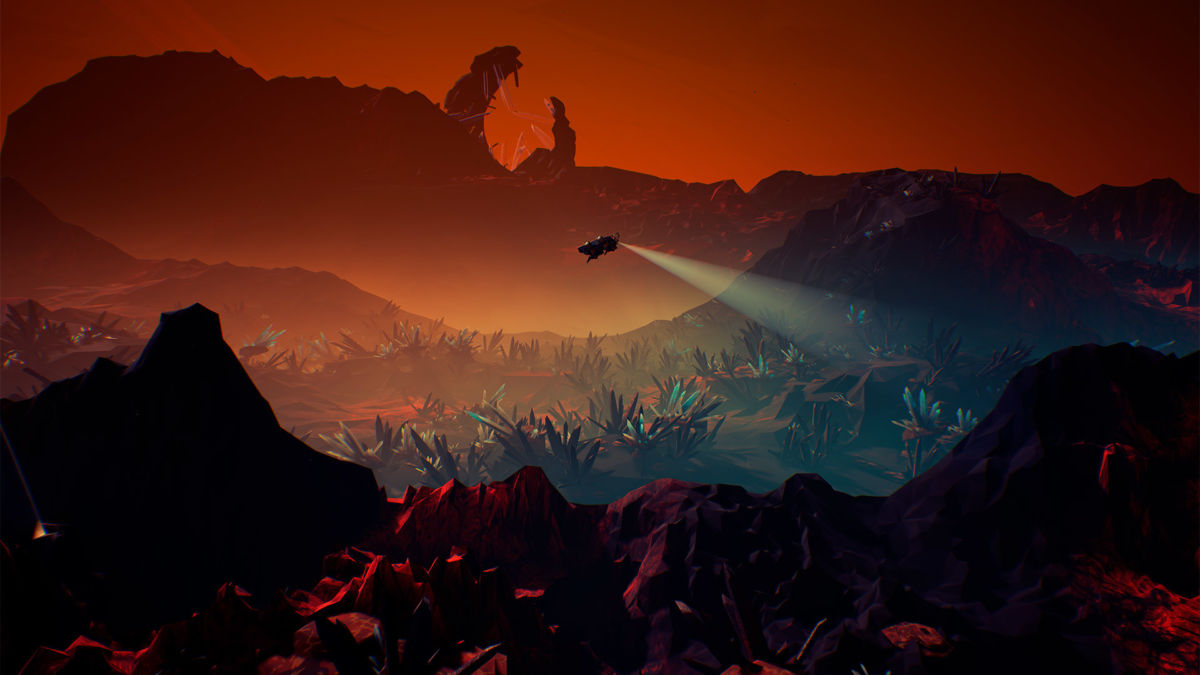
Drifting in another star system, I discover my resources are low. I’m running short on iron to fix my ship and lower on hydrogen needed to refuel. My lander pilot has a concussion and my scientist has a broken arm. Not to mention I owe Glukkt merchants 400 credits that I absolutely do not have. All of these dilemmas continue to mount and I am still over 33,000 parsecs from Earth.
These are the types of problems you will encounter in The Long Journey Home, a space exploration game with a heavy emphasis on resource management. After your ship’s jump drive malfunctions on a short trip into space, your crew of four terrestrial travellers are catapulted into the furthest reaches of the universe. Now stranded, they must embark on, you guessed it, the long journey home. It’s a game of great scope and an even steeper learning curve that you’ll either find very rewarding, or very frustrating.
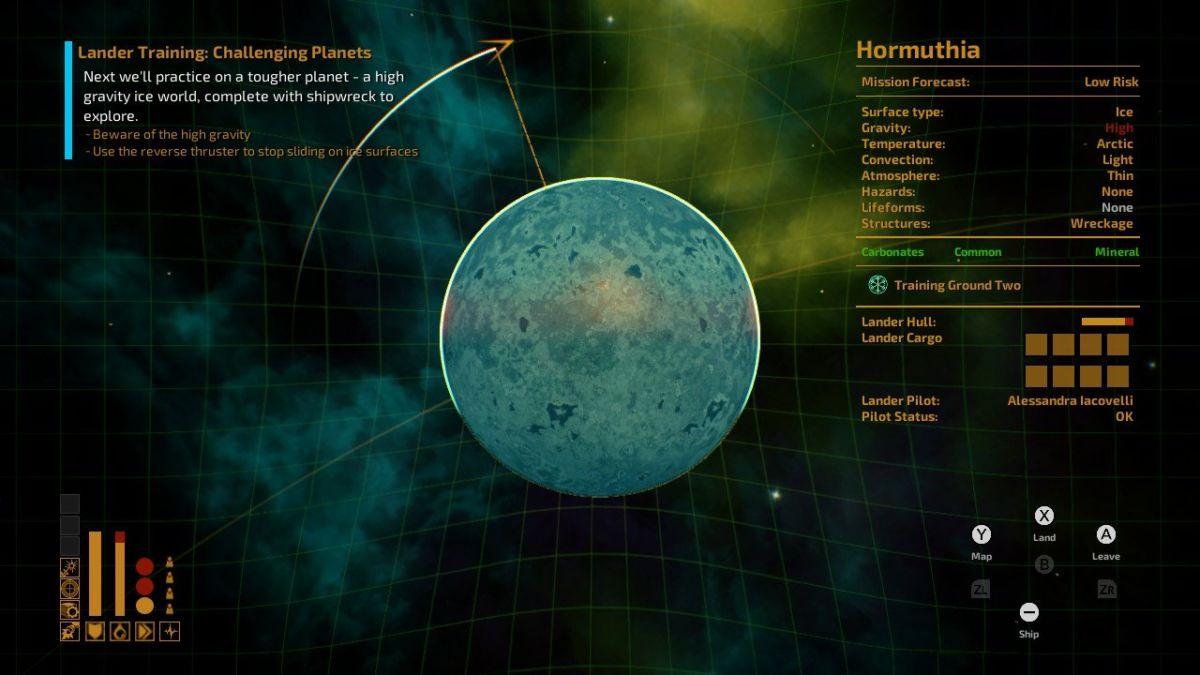
You start off by selecting a spacecraft, a lander and four crew members to join the expedition. Each selectable crew member has their own personalities and skills, which, depending on the type of journey you set out upon each time, may help or hinder your progression. The crew will all ruminate and comment on their predicament, helping them feel like actual people rather than generic placeholders.You can have a number of line-ups to try out because the likelihood is that your crew will die. A lot. It turns out that more can go wrong in space than right.
Varying afflictions will come from flying too close to stars or suns, getting into fights with other species and bad landings, amongst other things. They are, arguably, the most valuable asset for your trip, so you need to look after them.
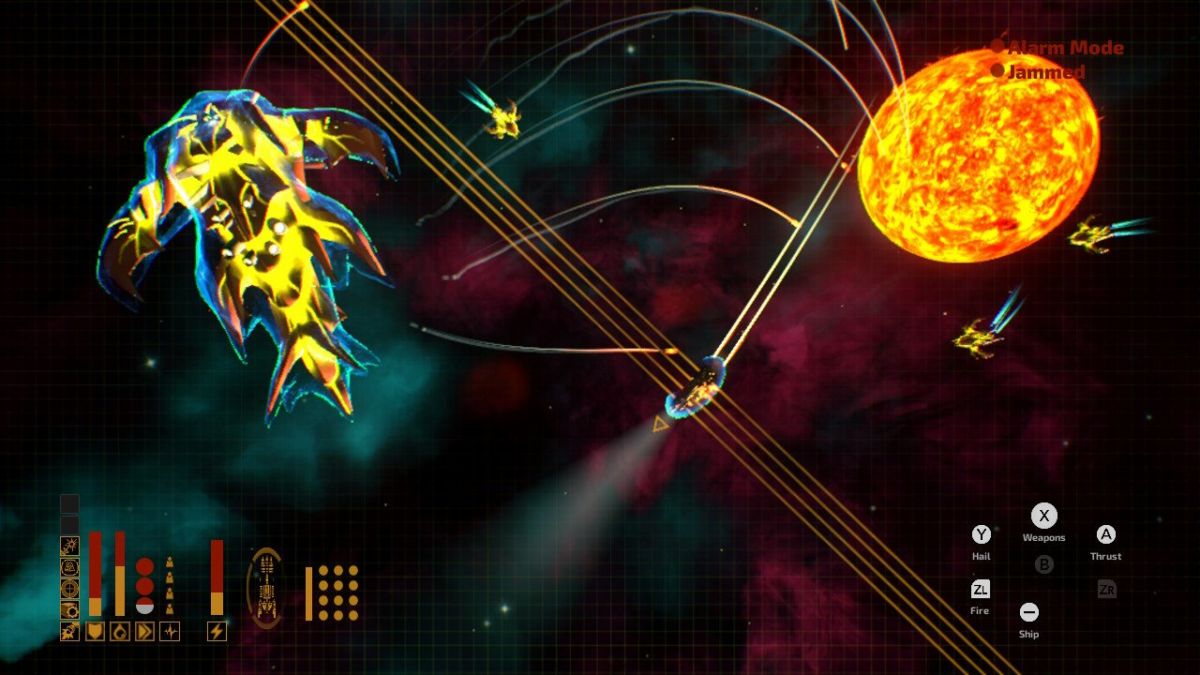
The real meat of Long Journey Home comes from its resource management. For you to get back to Earth, you travel from system to system, making stops at various planets along the way to pick up three types of valuable resources. These are metals, minerals and gases: metal will fix your ship and lander, minerals fill your jump drive and gases will fill your fuel tank. This is where things start to get tricky.
Firstly, you have to pilot your ship to each planet, all while being mindful of your speed and the size of said planet. Go too fast and you won’t be able to initiate the autopilot facility, gliding past the planet, meaning you’ll waste more fuel turning back around to give it another shot. It takes a while to get to grips with this and, even after hours spent in game, it’s something I still struggle with.

When you do manage to orbit the planet, you’ll be given information on the planet itself, such as its gravity, weather and what resources can be mined from it. Every planet will pose its own risks and rewards, but should you choose to investigate further, the lander will be sent down to the surface. Initially, this was an exciting prospect to discover new worlds but quickly became a huge source of frustration.
It never seemed to matter what type of gravity was in effect on the planet, as piloting the lander itself was a consistently difficult beast to get the hang of. You either come crashing down on to the surface, damaging your lander and pilot inside, or be launched across the map, past the mining points in low gravity and/or wind, desperately fighting for control, all as your lander’s fuel depletes in the process.
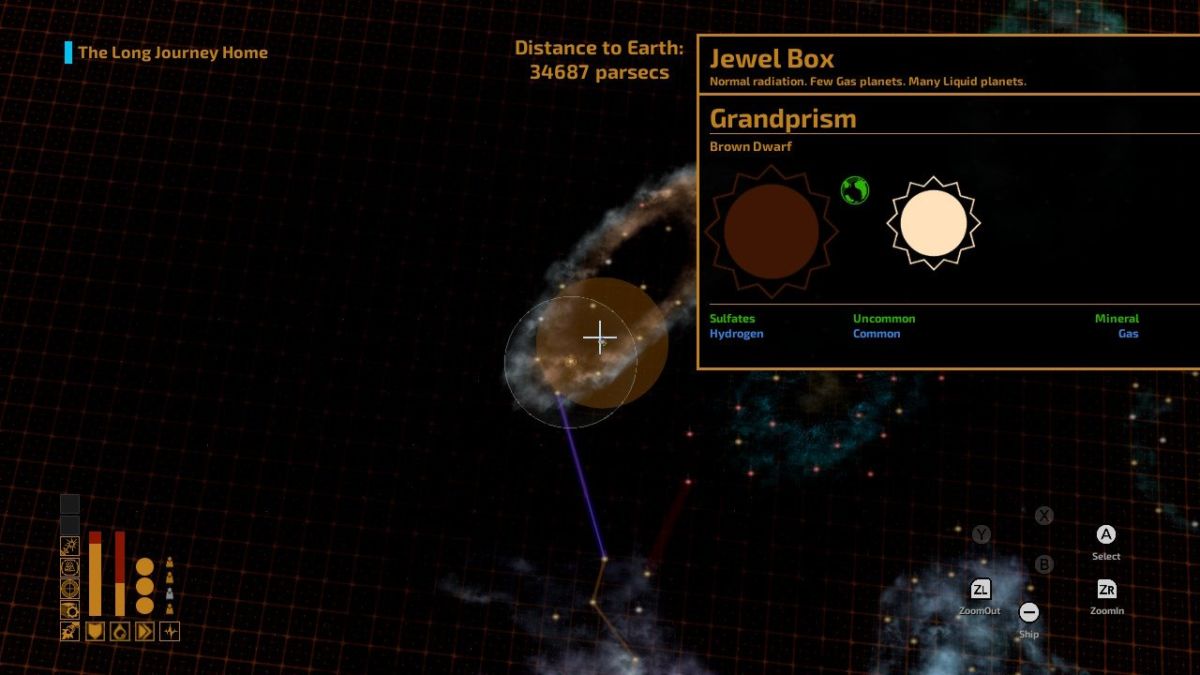
Mining for materials is achieved by landing at specific, telegraphed parts of the planet’s surface and drilling into them, or hovering over gases and hoovering them up by pressing the ZL button. This requires fuel, so you have to judge just how long you’re willing to stay planet side for, as well as taking into account the conditions which can damage the lander. It can quickly become annoying just how few resources you can farm despite going to such great efforts, too.
While it was never meant to be a walk in the park, it’s still a shame that a gameplay element so vital to the longevity of the Long Journey Home can be so gruelling and punishing. So much time is dedicated to finding resources, but you end up dreading all necessary excavations early into the game.
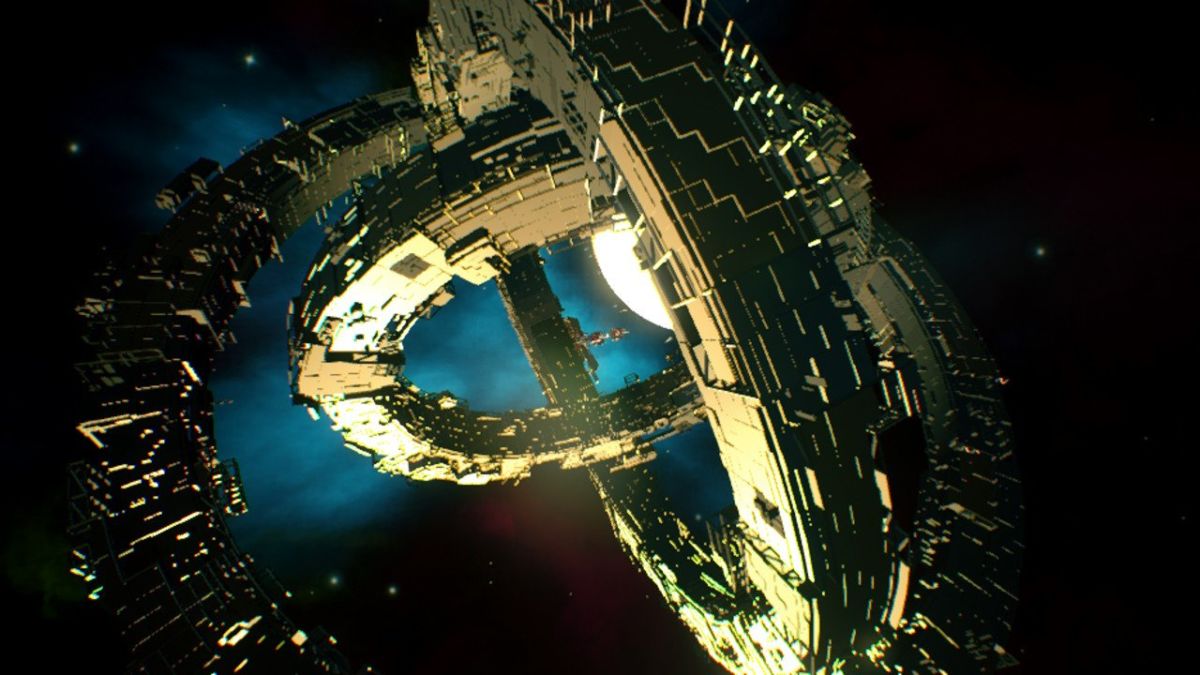
Where scavenging can become tedious, interacting with the huge array of alien lifeforms can be incredibly entertaining. There are so many species and races flying within the same space, all of which feel distinctive and unique. The aliens you meet along the way may be helpful and offer to trade, whereas more aggressive space folk will demand your credits, attacking you if you refuse.
Even with the ‘nicer’ species, you’ll need to keep them onside. One race lost respect for me because I didn’t want to hear a parting passage from the scripture they have devoted their existence to. All the encounters feel genuine, really helping to flesh out the universe, and easily making it one of Long Journey’s better highlights.
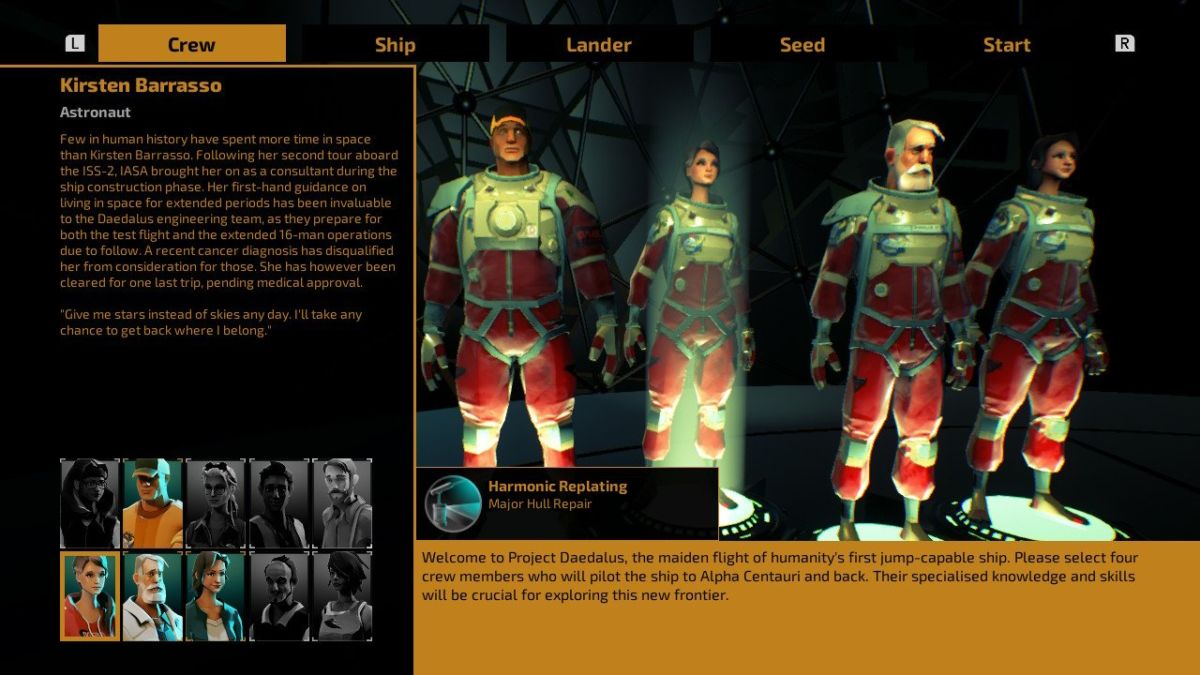
The almost infinite array of star systems and planets you can explore is awe inspiring. Truthfully, the sheer expansive space of The Long Journey Home takes time to get your head around — I just kind of wish there was an option to turn off the inevitable damage my crew received. After only a few hours, I couldn’t shake the feeling that I would not make it back to Earth in a single playthrough.
The Long Journey Home is largely defined by your failures — it makes each playthrough memorable, sure, but so many times I had next to no fuel, ship damage or some similar plight and nowhere near the resources or credits to remedy it. It all too often felt like the game was adding too much salt to too many wounds, and any time I could find something to enjoy, there was something else just as punishing waiting around the corner.
https://www.youtube.com/watch?v=CKCDldWDE_M
There is no doubt that The Long Journey Home is a difficult game. The environments are lush and downright delightful to take in, and your crew and the inhabitants of the many star systems you can explore feel authentic and engaging. However, navigation and operating the lander requires an extremely steep learning curve. For every positive experience you encounter, there will almost definitely be even more negative ones waiting to strike at the least opportune times. It’s not helped by the difficulty and chore of finding resources that are simply never enough for all the effort you go through to get them.
I understand that The Long Journey Home is designed to be a challenge, which is fine. I just wish that most of the experience didn’t feel like it was always piling on more and more despair.
A Switch code was provided by PR for this review.
Some of the coverage you find on Cultured Vultures contains affiliate links, which provide us with small commissions based on purchases made from visiting our site.
